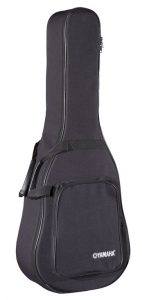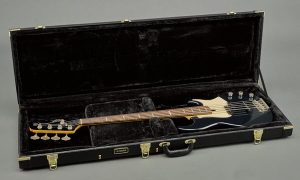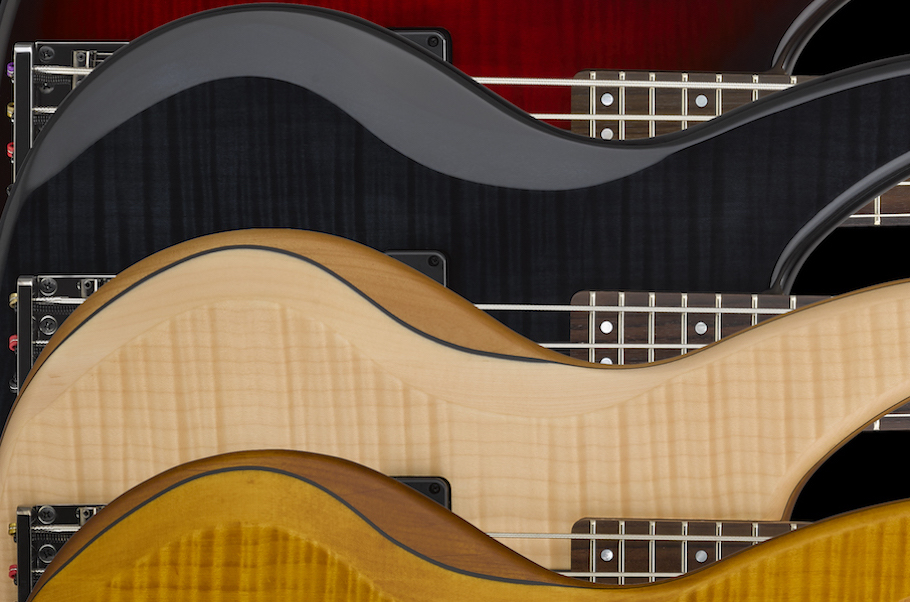Tips and Tricks for the Road Dog
How to safely transport your bass gear.
I count myself among the lucky ones who have never seriously damaged their basses while practicing, performing or traveling. No snapped headstocks or broken tuners; no cracks, gouges, scratches or major dings; no broken pots, snapped toggle switches or mangled jacks. I will admit, however, to once scrubbing mold stains off a bass following a major water leak in my band’s basement rehearsal studio. The instrument cleaned up nicely, faint blue cheese odor not withstanding. But I digress …
Actually, “luck” is the wrong word to use. My basses have survived as well as they have by design. They are the embodiment of a serious investment of my money, time and passion, so when it comes to taking them out of the house, the last thing I want to do is be careless or lazy. Through habitual vigilance, you too can protect your bass from mishaps while traveling between shows, setting up and breaking down, and even during performances. Most of my approach is just common sense. Your bass is meant to be played, not looked at, but it’s an extension of you, so there’s nothing wrong with being overzealous about protecting it.
Your Bass Needs a Case
This may be stating the obvious, but nothing will protect your bass like a case. They’re not all made the same, but any case is better than no case at all. I’ve read that Jaco Pastorius used to carry his bass around with wild abandon, both indoors and out, but you’re not Jaco. (Who among us is?) Weather can damage a mere mortal’s bass quickly, as can an unexpected slip on a step, sidewalk or parking lot. With one hand on your bass and nothing else to protect it from a sudden fall (except your body), real damage is only one misstep away. It’s not worth the risk. Get a case.
Gig Bags vs. Hardshell Cases
In the battle between gig bags and hardshell cases, there are pros and cons to each. Neither one will likely save your bass if it’s dropped from a great height, but some protection is always better than none, and both types can protect your bass from less serious calamities.

Gig bags are lighter and more ergonomic than their hardshell counterparts due to softer handles and adjustable shoulder straps that can be tweaked to your specific needs. The ones with ample padding will protect your bass from most minor mishaps, and as a bonus, they often come with separate compartments for carrying cables, cords and even small effects pedals to prevent them from grinding up against your bass. Some gig bags even have internal bracing and/or straps that stabilize your bass to keep it from jostling around.
If there’s a bass inside, it’s critical that you always check to make sure the zippers are closed before you pick up your gig bag — in fact, my advice is to check twice! This way, you’ll never have to worry about your bass freefalling. And just because a bag is padded doesn’t mean you should stack anything on top of it. A gig bag isn’t going to offer much protection from something (or someone) heavy sitting on it, or something falling on it. It’s more like an egg carton than a crate.

Hardshell cases are more substantial than gig bags, and therefore heavier, bulkier and more unwieldy. The better ones are form-fitted with built-in structural support behind the neck to keep your bass wedged tightly in place. These structural properties enable you to stack other items — within reason — on top without putting your bass in jeopardy. Other instrument cases, drums, or even a small combo amp can usually be placed on top of a hardshell case, as long as whatever it is won’t bounce around or concentrate weight in a small spot.
If you want to stand a hardshell case up on its end, and it has your bass inside, make sure to do so with the headstock end of the case up — basses can withstand a lot of mistreatment, but they don’t like standing on their heads. Make sure you close the case’s latches first, or your bass will come tumbling out when you go to move it!
A hardshell case may show the scars from the blows it saves your bass from, but your instrument will live to play another day. A gig bag, on the other hand, may look fine on the outside, but it will be less able to ward off damage under similar circumstances.
Travel Tips
If your band travels to gigs together, be sure there’s enough space in your vehicle for all your equipment. Squeezing your bass in between, say, a guitar combo amp on casters and your drummer’s hardware bag isn’t worth the risk.
Too much space can be a problem too: if you travel in a huge van, make sure to tie down your gear to prevent it from shifting or falling … or, worse yet, conking you on the head if the driver makes a sharp turn. (This actually happened to one of The Beatles’ early drummers. Afterwards, he decided that the life of a musician was not for him, and he quit the band. Yes, this set the stage for Ringo eventually taking the drum seat, but it’s still definitely not a good thing to have happen. Again, I digress …)
Load-In, Set-Up, Performance and Load-Out
Protecting your bass on the road is largely predictable. Where things can go horribly wrong is during load-in and set-up, as well as during your performance and load-out afterwards. A cable that gets caught around a sound man’s foot can suddenly yank a bass that was leaning up against an amp and send it crashing to the floor. A drummer forgetting to fully extend the legs on a cymbal stand can send sharp metal crashing toward your bass’s neck. (Or, worse yet, your neck!) Every venue, every stage and every recording studio is different, and you have to be aware of every potential hazard — from falling down (or up) dark steps to banging your headstock into low ceilings, low-hung lights and/or speaker arrays, to tripping over cords and stage monitors.
What scares me most is leaving my gear when I’m not playing. I always set up my amp and outboard pedals first before taking my bass out of its case. If there’s time between soundcheck and the show, I put the bass back in its case; if not, I always use a guitar stand with a latch to securely hold it upright, as opposed to just leaning my bass up against my amp.
Thankfully, bass players are rarely expected to be the center of attention on stage, which is fine with me. So, during a gig, I try to avoid flopping around on the floor, jumping off drum risers or showboating in any way. Regardless of your flamboyance level, using strap locks on your bass strap is a no-brainer!
When the gig ends, I pack up my bass and put it back in its case before doing anything else — that way, it can’t get banged up during load-out. And I make sure to carry it with me to the bar (instead of leaving it unattended onstage) so I can keep an eye on it. That way, I can prevent the greatest damage of all — theft — while enjoying a well-deserved frosty one.
Check out Michael’s other blog posts.
Click here for more information about Yamaha basses.














